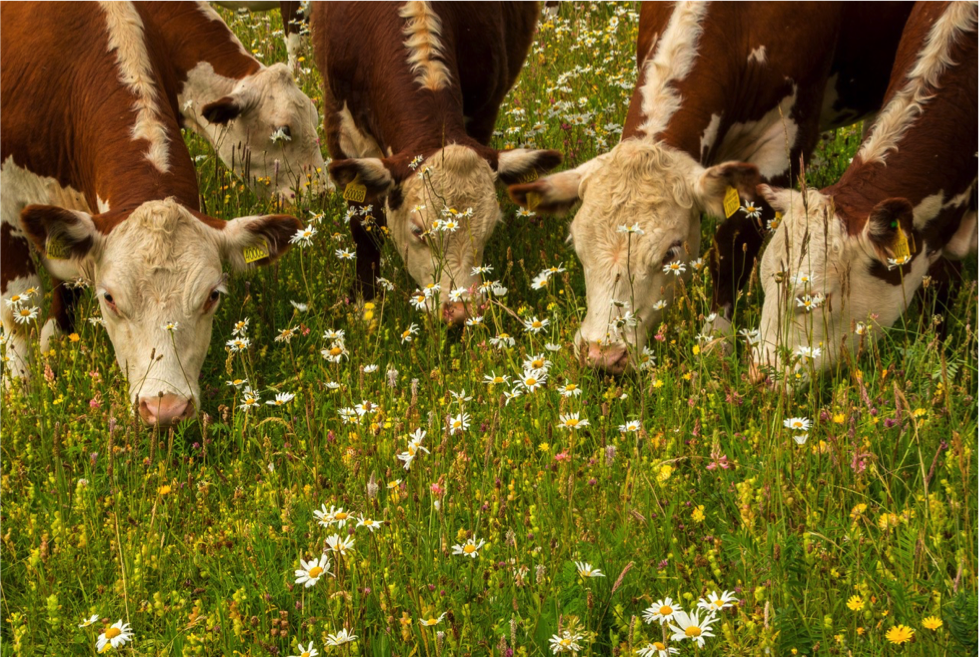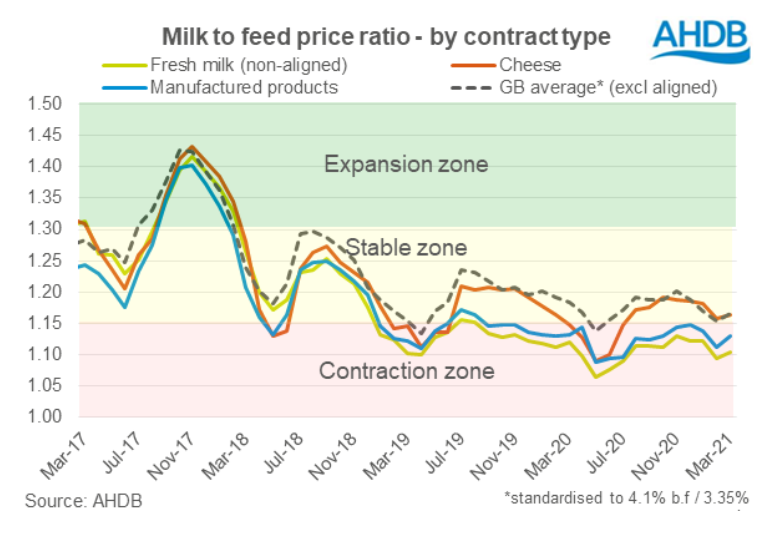



Production cuts loom as feed costs rise
The UK dairy industry could be set for a reduction in milk volumes as dairy farmers respond to rising feed costs.AHDB’s milk to feed price ratio is trending to the level at which milk output has historically contracted as farmers review feed volumes to manage costs.
Farmers supplying into non-aligned fresh milk or manufacturing supply chains have, however, been facing a pressure on margins for over a year.
Patty Clayton, AHDB lead analyst said: “Farmers will welcome recent milk prices increases, but these have been countered by a marked rise in feed prices. When our milk to feed price ratio drops below 1.15, concentrate use is often reduced, leading to a fall in overall production.”
AHDB’s milk to feed price ratio shows the value of milk compared with the cost of purchased feed.
While on average, the current milk to feed price ratio remains above that cut-off point, the use of average farmgate price masks the situation faced by individual farms.
The challenges facing fresh liquid and ingredients markets over the past year have led to a widening gap in farmgate prices, and farmers supplying those sectors have been operating with a low milk to feed price ratio for at least the past year – see graph.
Steve West, AHDB senior knowledge exchange manager said: “With feed and forage accounting for over 40% of cash costs, any rise in input prices can have a major impact on farm margins. Equally, it presents a big area of opportunity to make efficiencies on farm.”

Top tips to improve feed efficiency:
- Milk from forage - as the lowest cost feed source, maximise your volume or solids from forage
- Feed space – with housed cattle, fresh cows should be prioritised over stale cows. Create yarded loafing areas with extra feed space or modify culling protocols to reduce stocking pressure. Aim for an absolute minimum feed space of 60cm/cow.
- Feed consistency – for TMR-fed cattle, ensure consistency of the feed in the morning and afternoon. Sorting behaviour can be monitored using a Penn State particle separator and feeding frequency, mix times and chop length can be optimised.
- Beware of bullies – Dominant animals often control feed or water sources which will limit feed intakes. Ensure you have sufficient water space (1m for 10 cows) and water troughs and eliminate dead ends within housing.
- Review lying time - cows should be lying down for 13 to 14 hours each day to ruminate efficiently. Cows standing in their beds imply an issue with comfort or space.
- Lame cows – minimise the time lame cows are on their feet by keeping them close to buildings or in a hospital pen, and bring them in at the end of milking to reduce waiting times
- Monitor feed waste – weigh feed mixes going into TMR and manage clamp faces to minimise secondary fermentation.
AHDB’s Forage First guide offers guidance to farmers looking to review and improve their forage utilisation and can be downloaded here.
TheCattleSite News Desk




